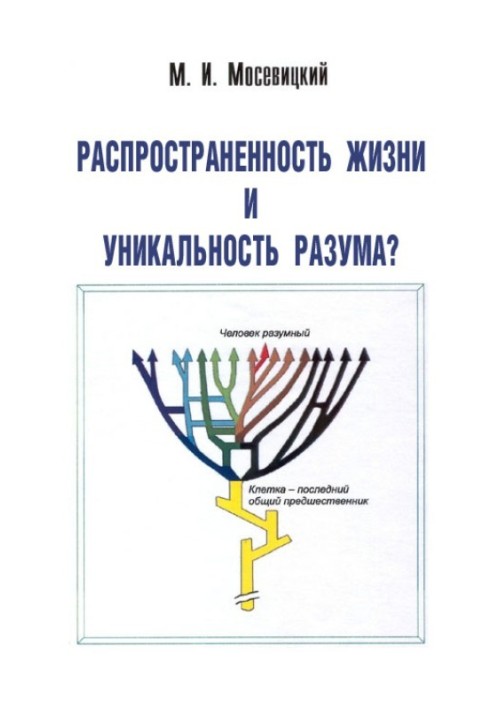The prevalence of life and the uniqueness of mind?
 Instant download
Instant download
after payment (24/7)
 Wide range of formats
Wide range of formats
(for all gadgets)
 Full book
Full book
(including for Apple and Android)
Examination of the earliest sedimentary rocks shows that cellular life forms were present on Earth about 3.85 billion years ago, that is, they appeared soon after the creation of conditions compatible with life. This means that precellular evolution, with all its complexity, could have been accomplished in a very short time (10–50 million years). According to another version, precellular evolution occurred outside the Earth (panspermia). In any case, the example of the Earth allows us to assume the widespread distribution of life wherever conditions suitable for its development are created. On the other hand, the fossil record, which began about 3.5 billion years ago, has revealed numerous crises (extinctions) that led to sharp reversals in the evolutionary process. Evolutionary crises were based on natural disasters caused by asteroid impacts, global glaciations, long-term (over millions of years) lava outflows, and changes in the gas balance in the ocean and atmosphere. Spontaneous mutations and horizontal exchanges of genetic material also had countless influences on evolution. Due to the imposition of a large number of random factors, the evolutionary process is unique each time. On Earth, after almost 4 billion years of life, the evolutionary process gave rise to the only branch of hominins leading to intelligence (the upright descendants of chimpanzees). After many critical situations, one shoot remained on this branch - modern humanity. The absence of signs of the existence of other civilizations in accessible space confirms the very low probability of evolution taking the route leading to intelligence. Understanding the nature of the crisis events that took place on Earth in the past is necessary in order to, relying on the ever-increasing capabilities of humanity, prevent the occurrence of these events in the future or at least mitigate their consequences. The main material is accessible to a wide range of readers. The author also sought to make the book interesting for specialists. This, in particular, explains the large number of references to recent publications in scientific journals.
Data sheet
- Name of the Author
- Марк Мосевицкий Исаакович
- Language
- Russian













